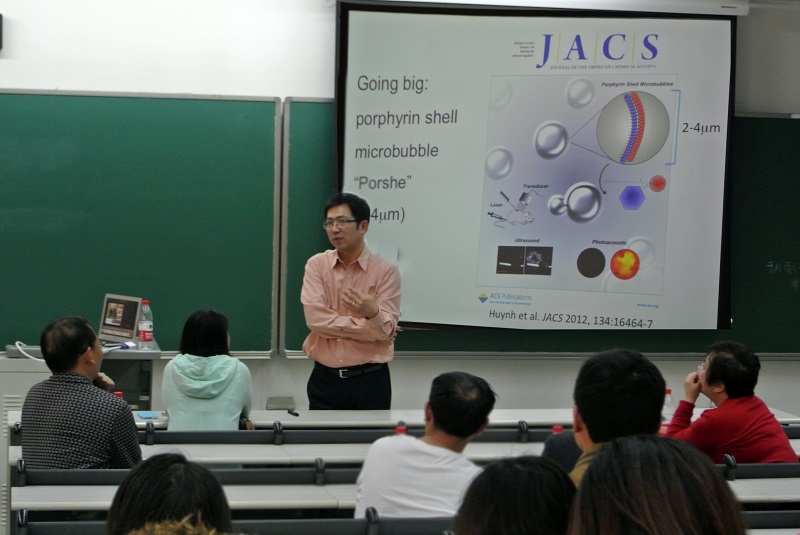题目:From nano to micro, and back: explore new frontiers of cancer imaging and therapy
报告人:郑岗教授
时 间:2015年4月10日(周五)下午2点
地 点:工学院力学楼434会议室
主持人:戴志飞
报告内容摘要:
Porphyrins are aromatic, organic, light-absorbing molecules that occur abundantly in nature, especially in the form of molecular self-assemblies. In 2011, we first discovered ‘porphysomes’, the self-assembled porphyrin-lipid nanoparticles with intrinsic multimodal photonic properties. The high-density porphyrin packing in bilayers enables the absorption and conversion of light energy to heat with extremely high efficiency, making them ideal candidates for photothermal therapy and photoacoustic imaging. Upon nanostructure disruption, fluorescence and photoreactivity of free porphyrins are restored to enable low background fluorescence imaging and activatable photodynamic therapy. Metal ions can be directly incorporated into the porphyrin building blocks of the preformed porphysomes thus unlocking their potential for PET and MRI. Later, we developed different porphyrin microstructures including porphyrin-shell microbubbles for trimodal (ultrasound/photoacoustic/fluorescence) imaging. Upon ultrasound exposure, porphyrin microbubbles form nanoparticles that possess the same optical and therapeutic properties as the original microbubble, thus providing an interesting opportunity to overcome the Achilles’ heel of cancer nanotechnology, where the over reliance of the enhanced permeability and retention effect has consistently resulted in promising efficacy in mouse models but poor clinical track record. By closing the nano-micro-nano loop, the simple yet intrinsic multimodal nature of porphyrin self-assembly represents a new frontier in cancer imaging and therapy.
报告人简介:
